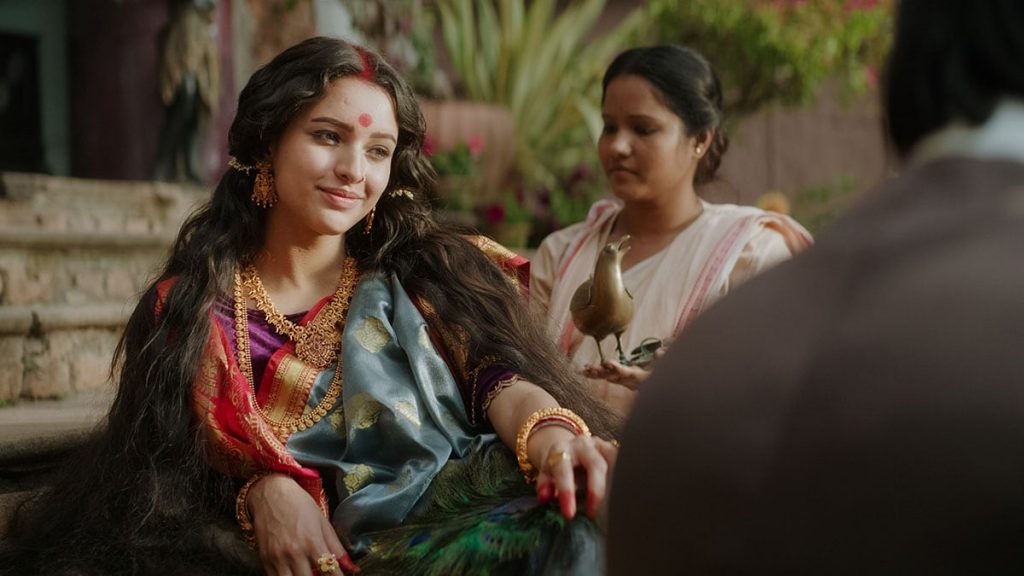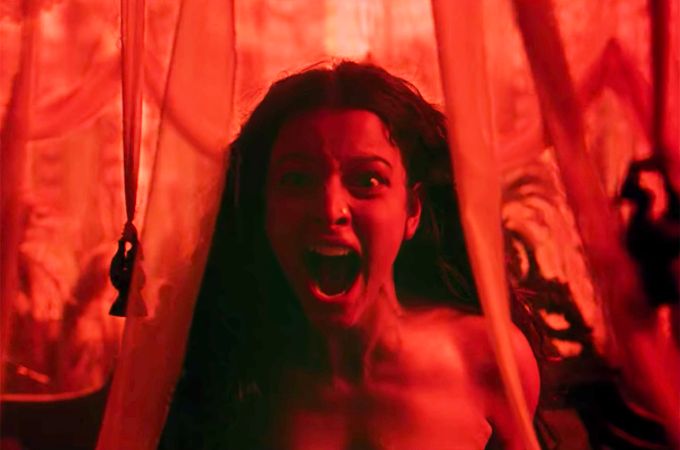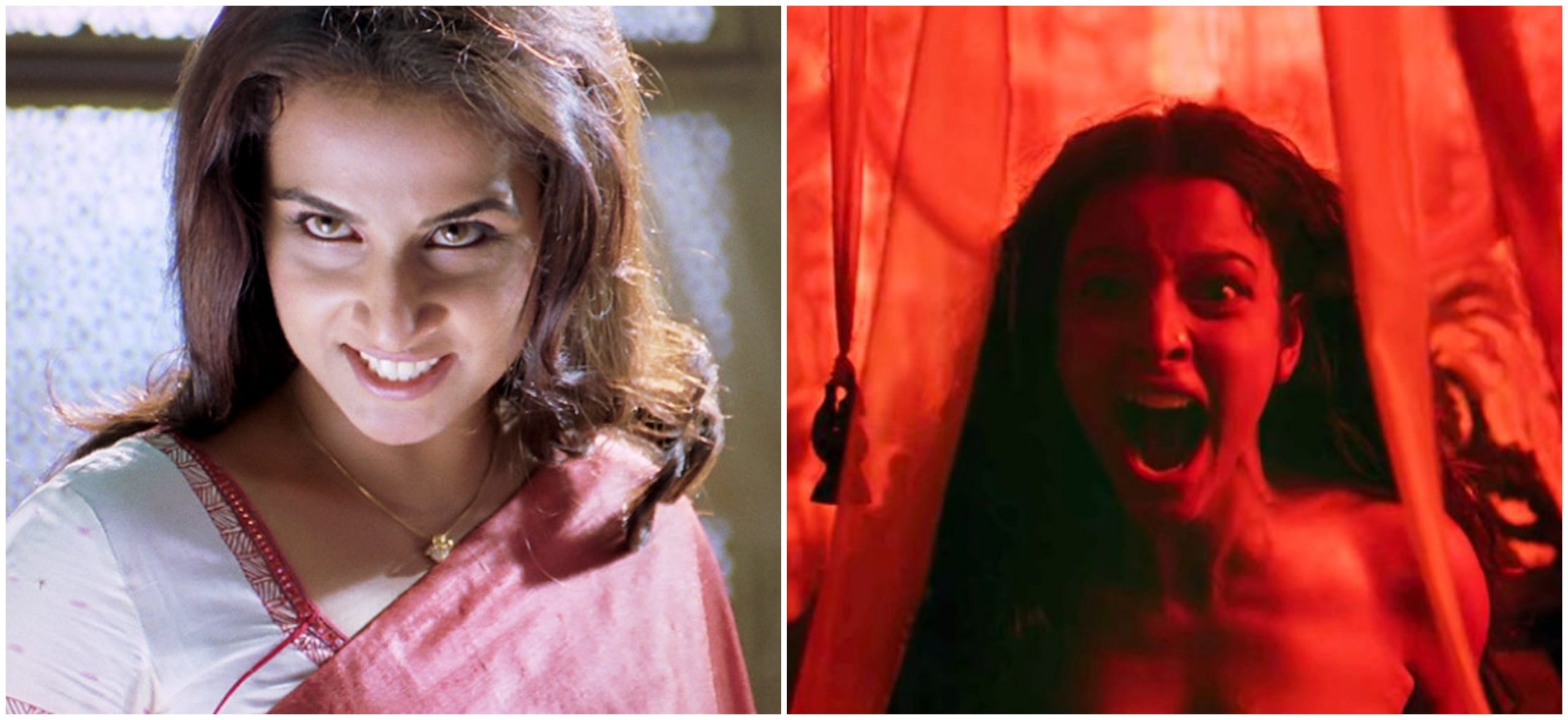The idea of witches in films and literature across cultures have long been a subject of scrutiny, fantasy, bewilderment and above all, patriarchal subjugation and wild assumptions. Such assumptions have found a specific genre in cultural narratives and the usual reinforcements of these assumptions have been subverted—ranging from witches having agency over their sexuality, expressing desire, craving power, challenging norms and social hierarchies.
In general, because of these reasons, feminists over the years have found in witches the window to challenge patriarchal subjugation. In witches they found the stories of all the women who had been oppressed, murdered or wronged because they did the very thing which patriarchy is afraid of—challenging masculine anxieties around women and dismantling patriarchal shackles. To put it simply, a witch has historically been any woman who dared being herself. The consequence with such an attempt was that women were demonised in popular culture and folklore for patriarchy to ensure that such imagery takes their form in the cultural consciousness of people and no woman dares to become a ‘witch’.

Over the years, women took the course of narrative in their own hands and reclaimed the idea of being a witch, or chudail (as we may call it in popular Hindi mythology and fairy tales). Women telling women stories formed a very integral element of feminist reclaiming spaces held by men controlling what stories need to be told and how one should tell such stories. In this context, thinking of the witch as a protagonist rather than the demonised villain is empowering and bold.
From this standpoint, Anvita Dutt who directed Bulbbul, seems to reclaim the space wrongly being denied to the protagonist of the story, Bulbbul (played by Tripti Dimri) and lays bare the uncomfortable truth of the all-encompassing male violence. Bulbbul, although set in late 1880s of British Bengal, seems all too real despite using the template of fairytale or folktales. The film at its core tells the story of all the women who have suffered in silence and whose blood remained unaccounted for, in the hands of all the oppressors there ever were.
The thematic commonality also finds its way through fairy tale parallels. Avni and Bulbbul internalise fairy tales while growing up. However, the difference lies in the way the film treated their respective internalisation. While in Bulbbul, internalising fairy tales for Bulbbul became a tool for her to reclaim her agency and seek her sense of justice, in Bhool Bhulaiya, Monjulika/Avni is dismissed, wronged, gaslighted and is forced to give in to patriarchal forces for a final “feel-good” ending, not to forget the perpetual stigma of mental health depicted in the film.
Bulbbul
Bulbbul uses the fairy-tale template of grandmother’s stories to speak of a tale soaked in deep anguish and blood of women across centuries who suffered in silence, fittingly described in one of the most compelling scenes when Binodini (Paoli Dam) is dolling and dressing Bulbbul up after a specifically traumatic incident a night before (trigger warning ahead), sharing a sense of shared pain and suffering through her monologue when she says, “Chup rehna! Badi haveliyon mein bade raaz hote hain, chup rehna!”—depicting the hollowness of the sprawling mansion which has been the witness and bearer of the trauma inflicted on the women.
Although Binodini and Bulbbul share a typical badi bahu (Bulbbul) and chhoti-bahu (Binodini) equation filled with pettiness and jealousy straight out of Ekta Kapoor’s soap opera universe (one of the chief ways in which patriarchy pits one woman against the other)—it is a shared sense of pain and sisterhood which helps Bulbbul see through the plight of Binodini. The difference lies in their reception of oppression. Like Binodini, many women are not able to exercise their agency to challenge their social conditioning held by patriarchy. Conforming becomes a tendency for them and the luxury of choice to challenge such norms rarely comes easy or lasts long enough to sustain their respective struggles.
The cinematography in every frame of the film is vibrant and expressive—speaking in multiple ways through its prominent signifiers. The red of the blood, for instance, speaks through the alta in Bulbbul’s feet, through the moon hallowing its crimson shade on the entire village and through the halo of the ‘chudail’ the village is haunted by which connotes a sense of pathos, generational trauma, deep sadness and silent sufferings of women across centuries as well as perseverance and strength.
Another interesting aspect of the film is the visbilisation of suffering and plight. When men of the village are murdered, there is thorough investigation of every possible cause behind the action. On the other hand, the women are subjected to domestic violence (which was deliberately being painted as the wife falling off from the stairs causing her bone to break), rape and murder, their sufferings are not only shrugged under the rug but are also subjected to silence, shaming, creating leeways for men to escape and women to suffer and stay stuck in perpetual cycle of abuse and oppression which also leads to a normalisation of abuse within the constructs of marriage existing to this date.

Monjolika Versus Bulbbul
Thematically, Bulbbul shares a closely-drawn parallel with the problematic representation of ‘Monjolika’ in Bhool Bhulaiya. The difference lies in the treatment given to both witch-like characters. (Spoilers ahead) If in Bulbbul, Bulbbul seeks retributive justice by killing every oppressive man in the village, in Bhool Bhulaiya, Monjulika receives an unfair treatment of patriarchy. She is killed by the cruel king once the king murders her lover in front of her. She then is shown as possessing Avni’s (Vidya Balan) imagination many years later wherein she is looking to avenge the death of her lover.
Thematically, Bulbbul shares a closely-drawn parallel with the problematic representation of ‘Monjolika’ in Bhool Bhulaiya. The difference lies in the treatment given to both witch-like characters. (Spoilers ahead) If in Bulbbul, Bulbbul seeks retributive justice by killing every oppressive man in the village, in Bhool Bhulaiya, Monjulika receives an unfair treatment of patriarchy. She is killed by the cruel king once the king murders her lover in front of her. She then is shown as possessing Avni’s (Vidya Balan) imagination many years later wherein she is looking to avenge the death of her lover.
The film depicts Monjulika (played by Vidya Balan) as hysterical, deviant and strips her off of her sense of justice by tricking her to believe that she finally was able to kill the evil king when in reality, they had put the dummy and gave her the sword to kill it. The revenge is not only wrongfully denied to her but she also is constantly shamed, ostracised and Avni’s mental health is constantly bracketed under the category of her being overpowered by an evil spirit, and she is also shown as hysterical which only adds to the stigmatisation of mental health. It also gives the control of narrative-building and righteousness of male perspective to evade, dismiss and invisibilise women’s pain and sufferings. The film also conflates personality disorder with stereotypical “hysteria” of women which has not only been a problematic depiction of mental health issues, but also puts the onus on the woman who has been wronged all along.
‘Monjolika’s’ depiction thus becomes the norm, not the exception.
The thematic commonality also finds its way through fairy tale parallels. Avni and Bulbbul internalise fairy tales while growing up. In ‘Bhool Bhulaiya’, Avni’s story is narrated by Aditya (Akshay Kumar) who plays a psychiatrist in the film. After knowing and understanding Avni’s backstory, Aditya finds out that Avni grew up listening to grandma’s fairy tales and felt associated with the characters who met injustice in the hands of the powerful. When she came to the haveli, she could relate with Monjulika’s story because she also was wronged and was forced to move away from her grandmother when her parents came back to take her, following which her grandmother passed away a few days later.
Bulbbul too, hears stories of fairies and chudails from Satya as they grew up exchanging such stories. However, the difference lies in the way the film treated their respective internalisation. While in Bulbbul, internalising fairy tales for Bulbbul became a tool for her to reclaim her agency and seek her sense of justice, in Bhool Bhulaiya, Monjulika/Avni is dismissed, wronged, gaslighted and is forced to give in to patriarchal forces for a final “feel-good” ending, not to forget the perpetual stigma of mental health depicted in the film.
Also read: How Bollywood Horror Films Misrepresent Their Female Protagonists
Women’s Rage In Bulbbul And Bhool Bhulaiyaa
(TW ahead) A couple of scenes in Bulbbul, which depict sexual violence and physical abuse, are gut-wrenching and are depicted in a manner which foregrounds pain and suffering within the broader framework of resistance and collective rage. In contemporary conversations around feminist rage in particular, an idea of the ‘angry feminist’ floats around quite often. The culture of silence has not only regulated female anger, it also has decided the responses to anger based on who is angry—whether it is a man or a woman. The stereotypes are all-too familiar for us whereby femininity demands the suppression of anger while masculinity rewards its expression. An angry woman is hysterical. An angry man, on the other hand, is recognised by his expression. In “Rage Becomes Her: The Power of Women’s Anger”, writer and activist Soraya Chemaly notes the causes of women’s rage around private and public abuse, discrimination, oppression and bias faced by women.
In Bulbbul, it is the dichotomy of rage that is clearly etched throughout the film. Toxic masculinity is glorified and celebrated. It also is shrugged under the rugs quite carefully whenever it is convenient for the man to hide the countless stories of women who were the silent victims of domestic abuse neatly passed off as an accident (she must have slipped through the stairs). Similarly, narratives of sexual violence in marriages are deliberately silenced and women are told to “stay quiet” to uphold and maintain the sanctity of marriage and the honor of household. In general, the pain of women has been subdued and rage is suppressed by silence and calculated smiles.

Feminine rage, literally and metaphorically, takes the form of the chudail and subverts the stereotypical trope associated with being conferred as one, thereby owning the very idea which has been used to shame and stigmatise women who have been historically wronged. Women’s rage has also suffered misrepresentations in films and literature, like Monjulika’s rage was conflated with hysteria and madness. Women’s rage was depicted as self-destructive and an aberration—something which doesn’t come naturally to women as opposed to men, wherein rage or masculine anger is second nature to them and they are glorified for exuding it.
Dutt’s envisioning of the paranormal with the usual signifiers we associate with that of a witch serves to change our perception of the witch by viewing her in the same fairy-tale template. The gendered rage thus depicted becomes a tool of emancipation rather than destruction, and the toe-rings, like the all-pervading male gaze, couldn’t really become the constant surveilling and controlling tool to create anxious gendered spaces.
Also read: Netflix’s Bulbbul Review — A Feminist Fantasy Or A Feminist Failure?
Bulbbul also champions in story-telling wherein the story of a woman is told by a woman. Such stories are powerful and they hinge on the slippery slope between the believable and the fantastical because fantasy-like sequences in Bulbbul foregrounds in them the suffering and plight of women suffered across generations. The human aspect sits inside the fantasy, making it believable and relatable to the existing horrors of society. Bulbbul, literally and metaphorically, is voicing out a tale in the middle of thousands of folktales and fairytales to reclaim the story of the witch, to create a room of her own (Virginia Woolf), and to make such stories a norm and not an exception which, to a great degree, the film has successfully managed to achieve.
References
1. New Yorker
2. Firstpost
3. The Logical Indian
4. Scroll
5. Indian Express
6. Live Wire
7. Sage
8. The Quint
About the author(s)
Tatsita is a postgraduate in Public Policy and Governance from Azim Premji University. A film and cultural studies enthusiast, Tatsita is fascinated by the Marxist, Post-Structuralist, Post-Modernist and Psychoanalytic school of thoughts to understand the idea of power in complex human relationships as well as oppressive social structures around gender and caste. Her interests also include film editing, sociology of law and intersectionality of urban housing patterns in India. She can be found on Twitter.





Wonderful article, thank you 🙂